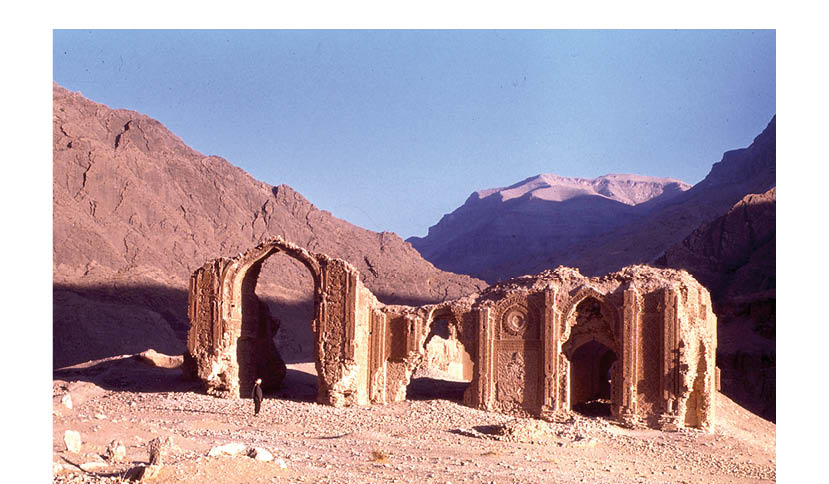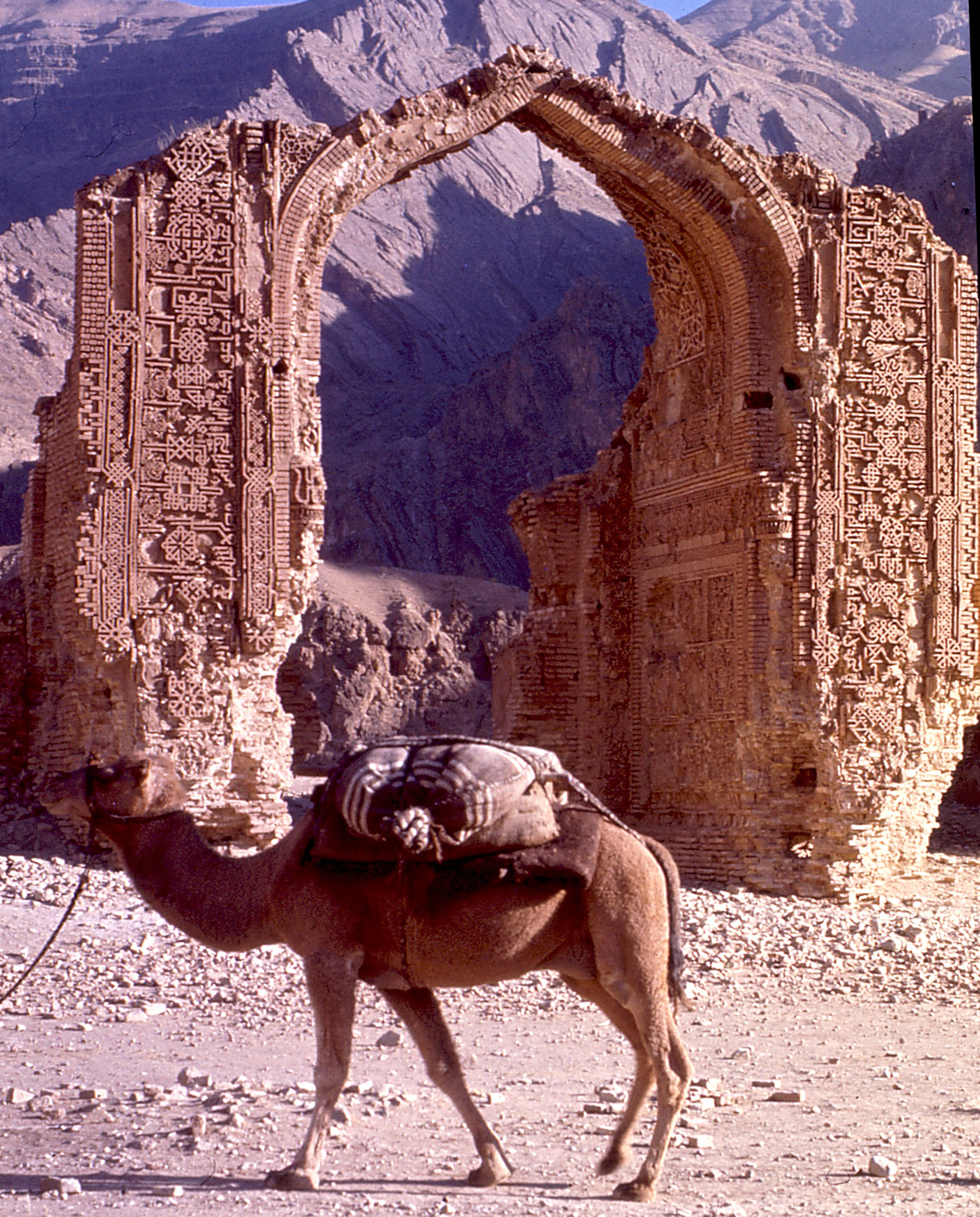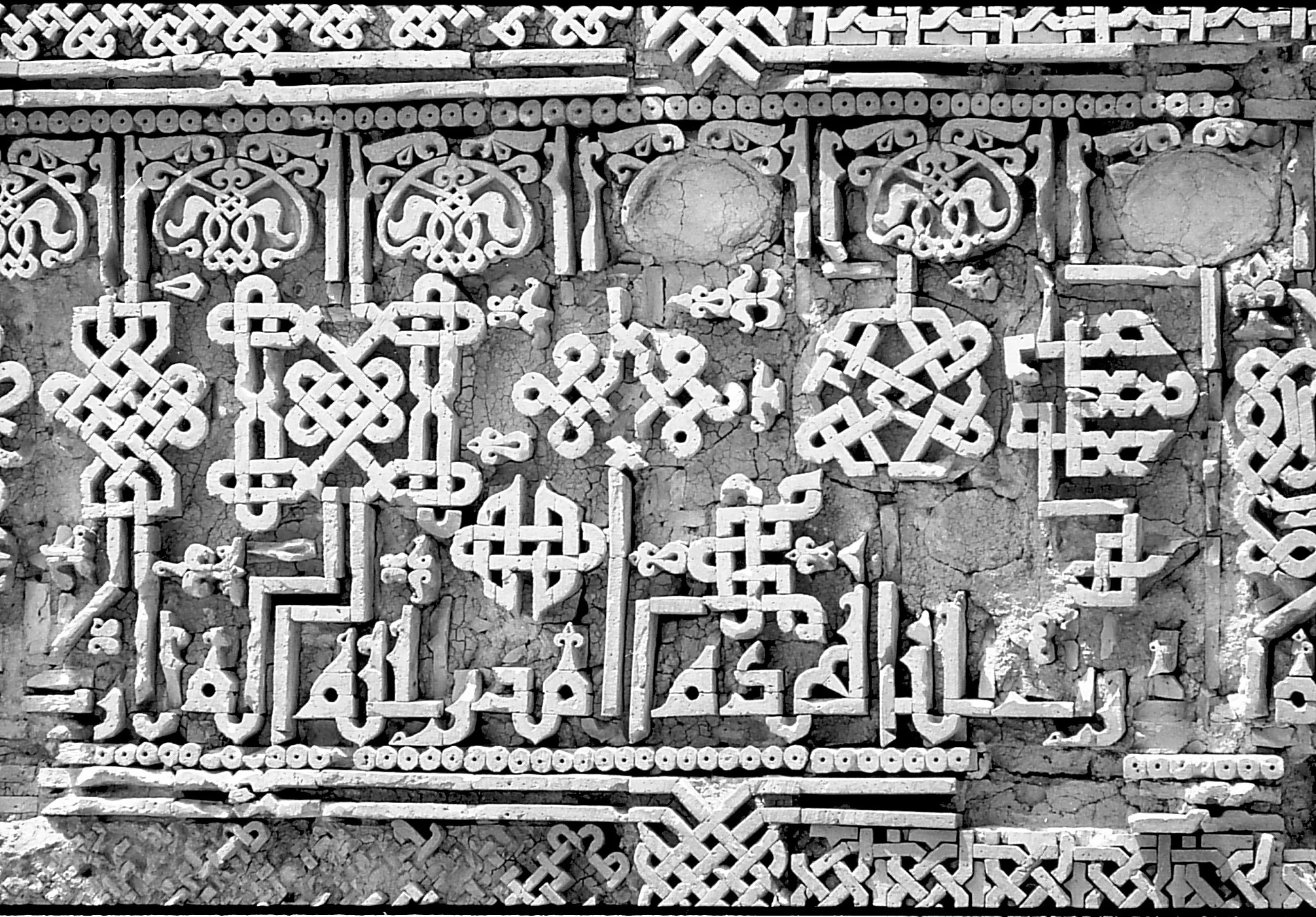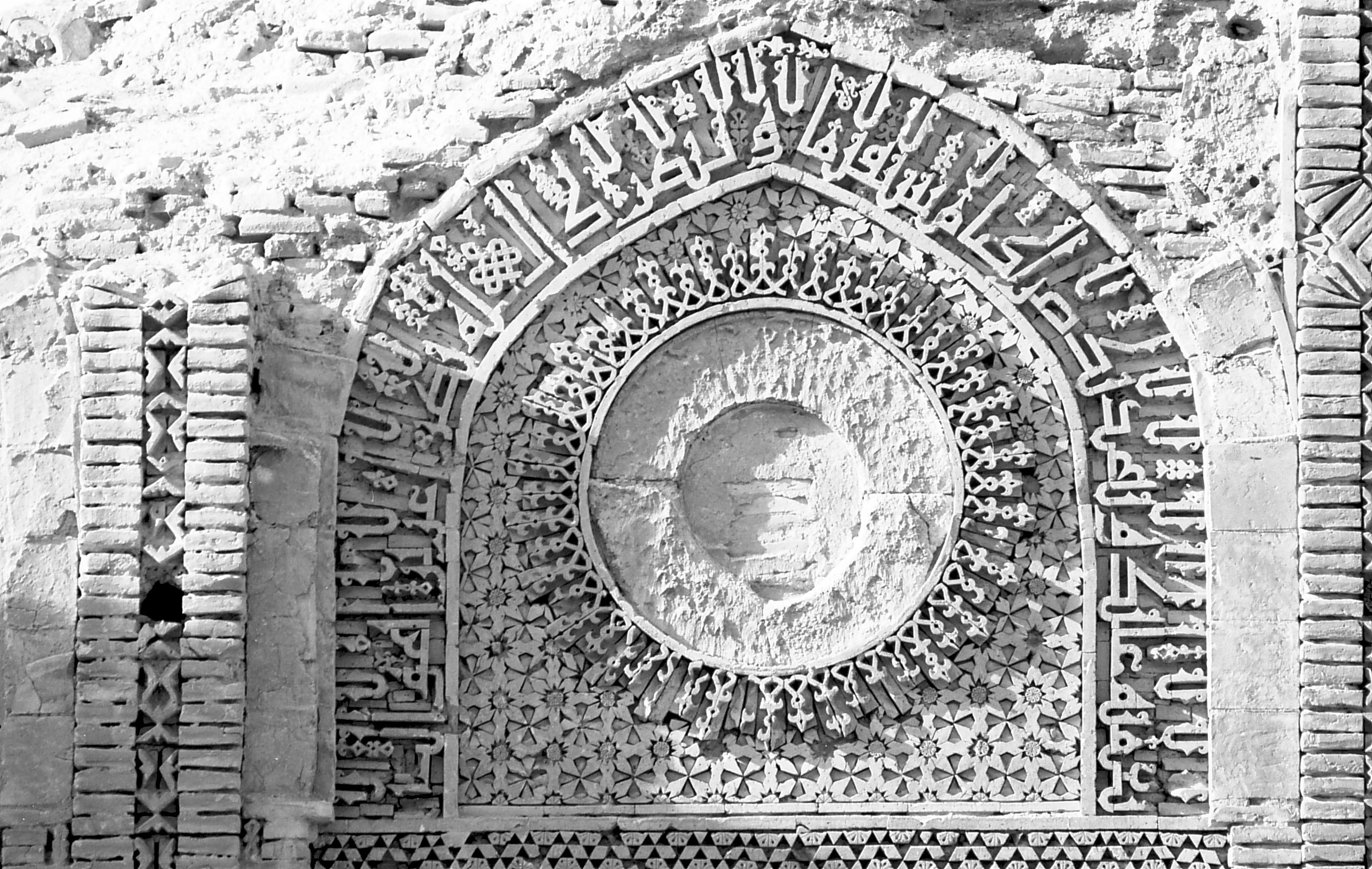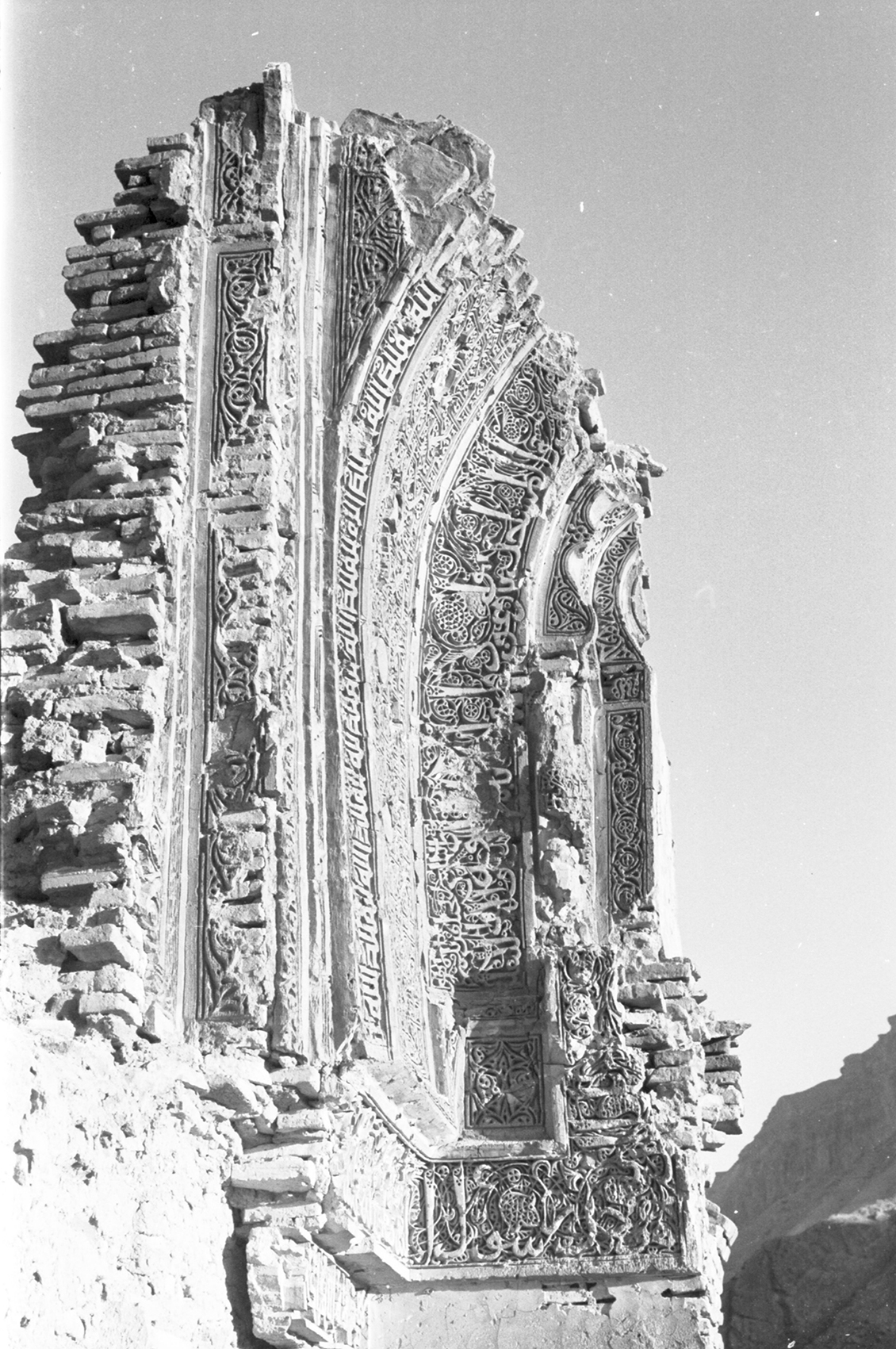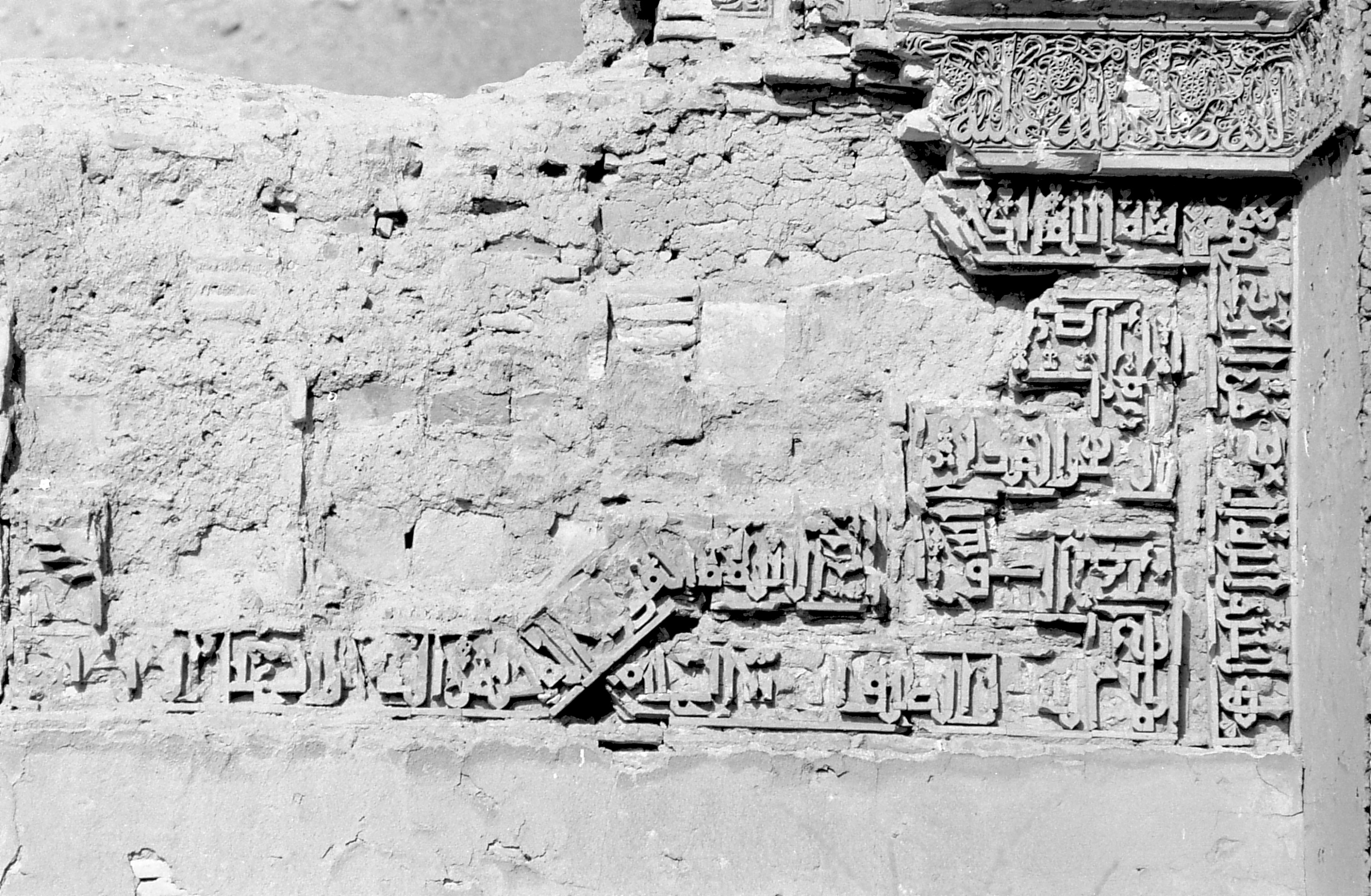Researchers interested in the archaeology and material culture of the Iranian region often face the impossibility of carrying out fieldwork adequate to their needs. Working at a distance has unquestionable limitations, but may lead to the consideration of monuments that play a key role in the understanding of historical and artistic processes, and increase attention and awareness for their necessary preservation. Indeed, the study of photographic archives can open up promising perspectives, as in the case of one of the lesser-known endangered heritage sites in modern Afghanistan. The monument in question is the madrasa known as “Shah-i Mashhad” [Fig. 1], erected in the second half of the 12th century in a remote location in the Morghab Valley (modern Jawand, Badghis Province, approx. 180 km north-east of Herat as the crow flies). The Austrian Academy of Sciences website provides permanent access to one of the key resource for the remote study of this site, namely the digital archive gathering photos (of the site) taken by the ethnologist Bernt Glatzer (1942-2009) during his fieldwork in the area. This repository brings together nearly 300 photographs (mostly black and white) documenting the discovery of the site in 1970, a second survey undertaken in 1971, as well as a subsequent visit in 1993. At the occasion of this latter campaign, the surveyors reported the advanced degradation of the structure, especially due to the reuse of building materials by local villagers and the regular passage of flocks. Moreover, since the 1980s illegal excavations have threatened the site, being poorly accessible for security reasons and difficult to monitor. To our knowledge, despite the appeals made by Afghan and foreign scholars, no conservation project has been undertaken to date on the site, which is one of the earliest surviving Islamic educational institutions.
At least three features make the monument exceptional: first, the Shah-i Mashhad complex is the earliest known Islamic building to be explicitly designated as a madrasa in the foundation inscription adorning its portal [Figs 2-3]. Second, the patron of the building was a noble lady, which was rather unusual in the Iranian region in the 12th century. Although her name is partly lost, it has been speculated that she might have been either the wife or daughter of the Ghurid Sultan Ghiyath al‑din Muhammad b. Sam (r. 1163-1203). Last but not least, the monument bears traces of a lavish architectural decoration, which combines a wide palette of ornamental devices inspired by vegetal and geometric forms with an equally varied and ornamented epigraphic program, thus standing out as a major accomplishment of the Iranian art of brickwork [Figs 4-5]. Notwithstanding the efforts of Glatzer and his collaborators to reconstruct the ground plan of the madrasa and to index individual photos, it is not easy to get an overall view of the original structures, precisely because of the stylistic variety and profusion of details in their decoration.
The Ghurid (or Shansabanid) confederation ruled over a sultanate stretching from Khurasan to Northern India (ca. 1149-1215) and its rulers and commanders-in-chief patronised the foundation of impressive religious buildings across this territory. Ghurid sultans only intermittently controlled the city of Herat and the surrounding region, which was the scene of several clashes with rival powers. The chronology and architectural features allow us to relate the Shah-i Mashhad madrasa to other Ghurid monuments in north-western Afghanistan: the celebrated Minaret of Jam (1174–75) and two domed structures in Chisht-i Sharif (1167 and later renovations). Although the ruins of these monuments stand today in isolation, one can argue that they were once integrated in a network of religious institutions, which perhaps helped consolidate Ghurid control over this region.
Several questions related to the chronology and original function of the Shah-i Mashhad madrasa remain open: to start with, the date recorded on the portal inscription has been differently read as 561 AH [= 1166 CE] or 571 [= 1176 CE]. It is similarly unknown if this date refers to the beginning or the completion of the construction works. In addition, although the monument is confidently identified with a madrasa, the exact religious affiliations of its instructors and residents is uncertain, and Abdul W. Najimi has hypothesised that the complex originally included the mausoleum of a Ghurid prince.
At present, the “Shah-i Mashhad Documentation” provides the only opportunity to revisit this poorly accessible monument, to observe details of its largely vanished decoration, to acknowledge its value as a historical and artistic testimony. This repository constitutes an invaluable source for a researcher interested, as I am, in the epigraphic tradition of pre-Mongol Iran. Preliminary examinations of the archive allowed me to identify some previously unpublished or under studied inscriptions, which promise to shed new light on the history of the building. Indeed, four small-sized tiles inscribed with the names of the first four caliphs – the “Rightly Guided” of the Sunni tradition– counterbalance the already known evidence that hinted at a Shiite orientation of the epigraphic programme. Moreover, a panel transcribing the “Beautiful Names” of God [Fig. 6] corroborates Najimi’s hypothesis that part of the complex had a funerary function, since it could be inspired by the well-known hadith: “Allah has ninety-nine Names, one hundred less one; and he who memorised them all by heart will enter Paradise”.
These are just some of the paths open to research and further study of the inscriptions is needed, together with a thorough examination of the architectural and decorative features, in order to achieve a better understanding of this impressive, though little-known monument and to properly replace it in the cultural landscape of medieval Afghanistan.
Further reading
Casimir, Michael J. and Bernt Glatzer, “Šāh-i Mašhad, a Recently Discovered Madrasah of the Ghurid Period in Ġarǧistān (Afghanistan)”, East and West 21 (1971): 53-68.
Glatzer, Bernt, “The Madrasah of Shah-i-Mashhad in Badgis”, Afghanistan 25 (1973): 46–68.
Najimi, Abdul Wassay, “The Ghurid Madrasa and Mausoleum of Shah-i Mashhad Ghur”, Iran 53 (2015): 143–69.
Patel, Alka, Iran to India: The Shansabanis of Afghanistan, c. 1145–1190 (Edinburgh: Edinburgh University Press, 2021).
